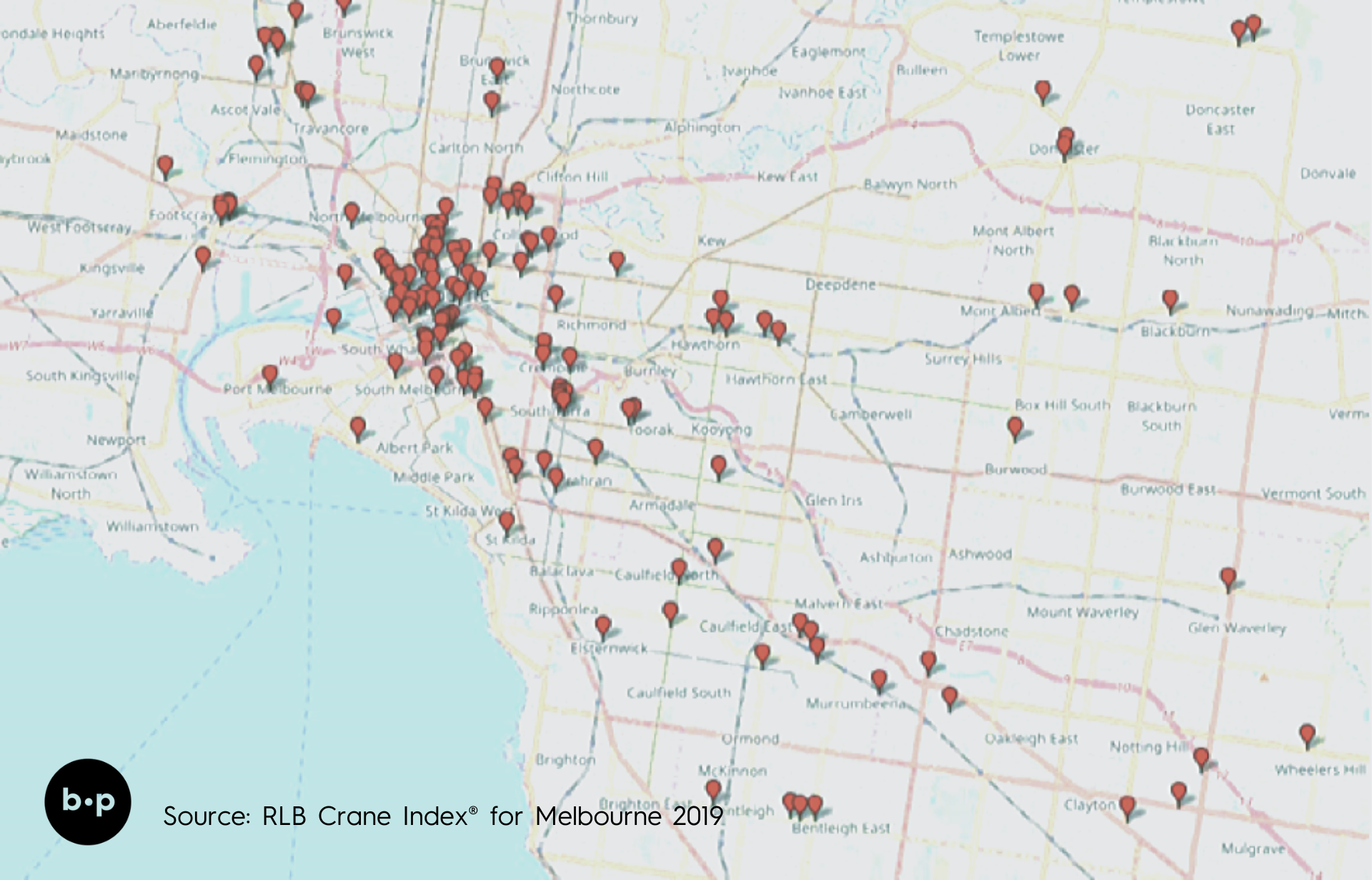I would be surprised if anyone living in Melbourne hadn’t had a conversation about how many cranes there are in the city. The RLB Crane Index® indicated that 2019 saw a record-breaking number of cranes operating across Melbourne.
Isn’t there something odd about Melbourne, a great, great city, however still only a city of 5 million people, ranking among the top cities of the world for the number of cranes?
And should we be concerned about a downturn? Or with the recent COVID-19 crisis, are we already in one?
Strong skyline, strong economy
Perhaps it’s actually a case of strong skyline, strong economy.
Experts say that the number of cranes operating in a city can be used as a form of economic ‘mining canary’. A mining canary was a small bird taken into mines until as late as 1986, to alert miners of dangerous oxygen levels if the bird took ill or died. The theory goes, if cranes can be seen on the skyline, the economy is likely doing well.
Since the construction industry has been booming Australia wide for most of the last decade, it now contributes 8.1% of the Gross Value Added (GVA) to the Australian economy, around 13% of Australia’s GDP, and employs 9% of the total workforce across the country – that’s basically one in 10 Australians. It also contributes $21.6 billion to the Victorian economy each year.
We’ve seen massive population and economic growth and if this growth continues, Melbourne will become Australia’s largest city by 2026.
Where are all these cranes?
Most of Melbourne’s recent population growth has been absorbed by new development in ‘greenfield’ outer suburbs, mainly 3-4 bedroom houses with backyards. No cranes needed here. However, the inner city populations are also rising very quickly, increasing by 8.3% between 2017-18.

The majority (68%) of Melbourne’s cranes are working on residential buildings operating in the inner city suburbs.
At the same time, an infrastructure boom coined ‘Victoria’s Big Build’, including projects such as the Melbourne Metro are also increasing the crane count. These projects are also another response to the population growth seen by Melbourne.
But is there a downturn coming?
While lots of cranes do indicate a busy construction industry, it is a delayed indication of the reality. It can take many years to get from a proposed design to even the beginning of the early works on a construction site.
The RLB Crane Index predicted a potential reduction in crane numbers and AIG Australia reported less new contracts are replacing current and completed construction projects. Some sources say the industry is already on the brink of collapse, with most large contractors barely making a margin.
So what really happens when you combine the effects of tightening finance due to the banking Royal Commission, falling foreign investment on the back of stricter stamp duty and FIRB laws, a drop in general market confidence and a looming recession due to the COVID-19 crisis?
You probably get more government money thrown at you. And special treatment when it comes to dealing with a pandemic. All because the industry is now simply too big to fail.
Words by Joe Hoppe and Raghav Goel for blueprint
Cover photo by Arnaud Mesureur on Unsplash